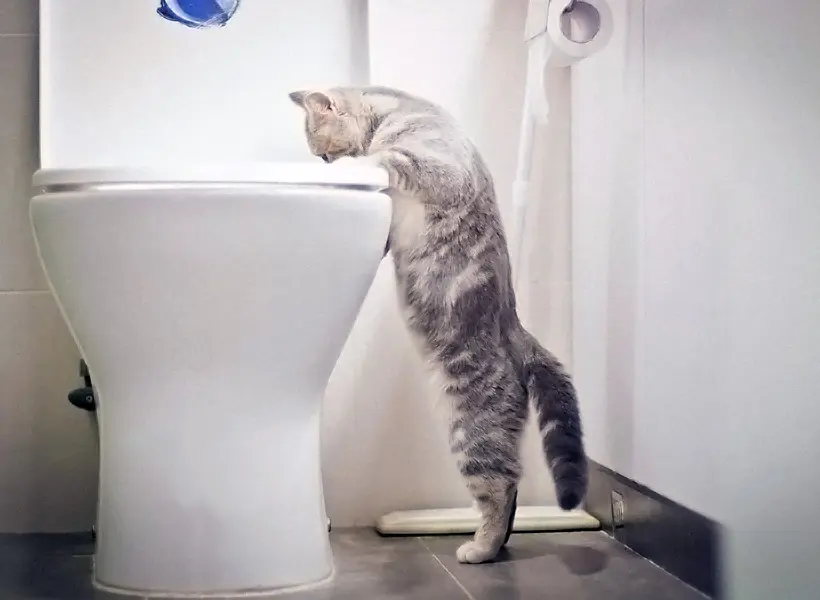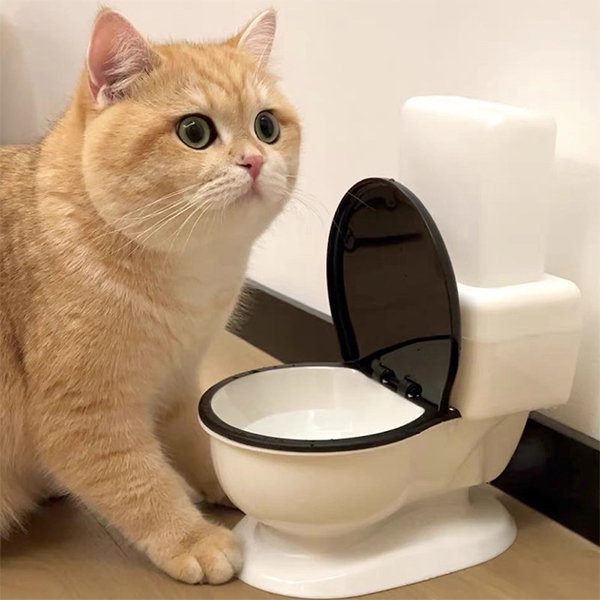Listed here down the page you can locate some excellent answers regarding Don’t flush cat feces down the toilet.

Introduction
As cat proprietors, it's important to be mindful of just how we dispose of our feline close friends' waste. While it might appear practical to purge feline poop down the bathroom, this practice can have harmful consequences for both the setting and human health.
Alternatives to Flushing
The good news is, there are more secure and a lot more accountable ways to throw away feline poop. Take into consideration the adhering to options:
1. Scoop and Dispose in Trash
One of the most usual method of disposing of cat poop is to scoop it right into an eco-friendly bag and throw it in the garbage. Be sure to make use of a specialized litter scoop and deal with the waste promptly.
2. Use Biodegradable Litter
Select naturally degradable cat trash made from materials such as corn or wheat. These trashes are eco-friendly and can be securely taken care of in the garbage.
3. Bury in the Yard
If you have a yard, take into consideration burying feline waste in a marked area far from vegetable gardens and water sources. Be sure to dig deep sufficient to stop contamination of groundwater.
4. Set Up a Pet Waste Disposal System
Buy a pet garbage disposal system particularly created for cat waste. These systems make use of enzymes to break down the waste, decreasing odor and environmental influence.
Wellness Risks
In addition to environmental issues, flushing feline waste can additionally posture health threats to humans. Cat feces may contain Toxoplasma gondii, a parasite that can cause toxoplasmosis-- a possibly severe disease, especially for expecting women and people with damaged immune systems.
Ecological Impact
Flushing pet cat poop introduces dangerous pathogens and parasites right into the water, posing a considerable danger to water ecosystems. These pollutants can negatively affect aquatic life and concession water quality.
Conclusion
Responsible animal possession expands past giving food and shelter-- it also entails appropriate waste management. By refraining from flushing pet cat poop down the toilet and selecting alternate disposal methods, we can decrease our ecological footprint and shield human health and wellness.
Why Can’t I Flush Cat Poop?
It Spreads a Parasite
Cats are frequently infected with a parasite called toxoplasma gondii. The parasite causes an infection called toxoplasmosis. It is usually harmless to cats. The parasite only uses cat poop as a host for its eggs. Otherwise, the cat’s immune system usually keeps the infection at low enough levels to maintain its own health. But it does not stop the develop of eggs. These eggs are tiny and surprisingly tough. They may survive for a year before they begin to grow. But that’s the problem.
Our wastewater system is not designed to deal with toxoplasmosis eggs. Instead, most eggs will flush from your toilet into sewers and wastewater management plants. After the sewage is treated for many other harmful things in it, it is typically released into local rivers, lakes, or oceans. Here, the toxoplasmosis eggs can find new hosts, including starfish, crabs, otters, and many other wildlife. For many, this is a significant risk to their health. Toxoplasmosis can also end up infecting water sources that are important for agriculture, which means our deer, pigs, and sheep can get infected too.
Is There Risk to Humans?
There can be a risk to human life from flushing cat poop down the toilet. If you do so, the parasites from your cat’s poop can end up in shellfish, game animals, or livestock. If this meat is then served raw or undercooked, the people who eat it can get sick.
In fact, according to the CDC, 40 million people in the United States are infected with toxoplasma gondii. They get it from exposure to infected seafood, or from some kind of cat poop contamination, like drinking from a stream that is contaminated or touching anything that has come into contact with cat poop. That includes just cleaning a cat litter box.
Most people who get infected with these parasites will not develop any symptoms. However, for pregnant women or for those with compromised immune systems, the parasite can cause severe health problems.
How to Handle Cat Poop
The best way to handle cat poop is actually to clean the box more often. The eggs that the parasite sheds will not become active until one to five days after the cat poops. That means that if you clean daily, you’re much less likely to come into direct contact with infectious eggs.
That said, always dispose of cat poop in the garbage and not down the toilet. Wash your hands before and after you clean the litter box, and bring the bag of poop right outside to your garbage bins.
https://trenchlesssolutionsusa.com/why-cant-i-flush-cat-poop/

Do you appreciate reading up on Don’t flush cat feces down the toilet? Place a remark below. We would be glad to see your ideas about this piece. We hope that you visit us again later on. Please take the opportunity to distribute this blog post if you liked it. We take joy in reading our article about Don’t flush cat feces down the toilet.
Additional Information